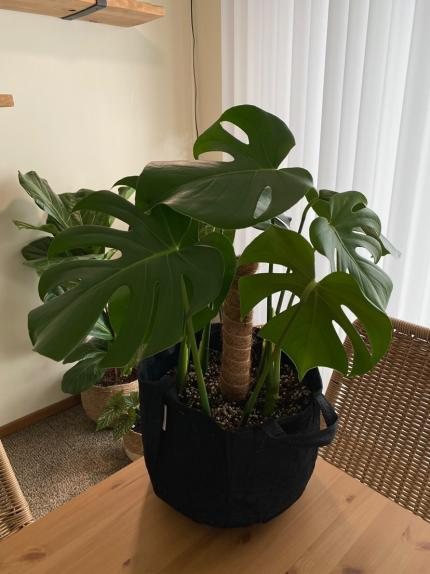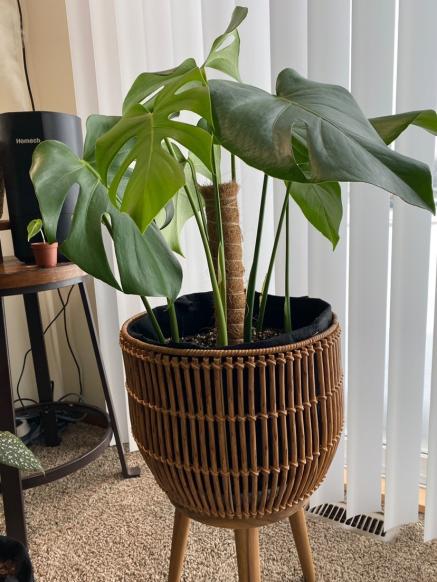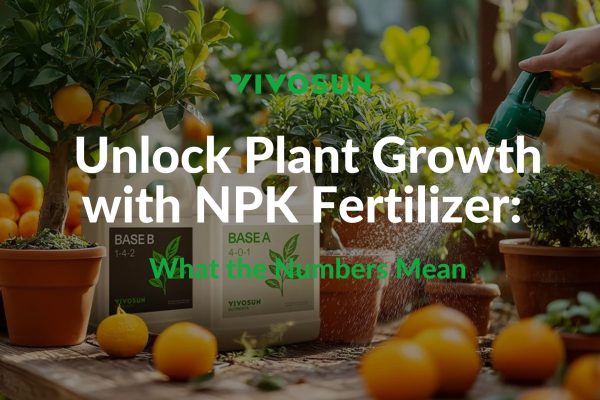As we all know, choosing a good grow bag is one of the most important steps for a gardener. There is no single, ideal growing container for everyone—just choose the type you like the most and that works the best for your home. Even though any gardener can use a fabric grow bag, sometimes a traditional container might be a better choice. In the following article, let’s figure out the pros and cons of using fabric grow bags.

Pros and cons of using fabric grow bags
The Pros of Fabric Bags
Using fabric grow bags encourage healthy root development. There will be an air exchange through the material of the grow pot, not across just the surface, so airflow brings essential gasses (oxygen, nitrogen, and carbon dioxide) directly into the soil. This aeration helps nourish plants since much of the chemical elements in the air become entangled in the soil. Airflow through fabric grow bags also prune the tips of roots—root pruning happens because roots are exposed to dry air, which causes stunted growth until more central, stronger roots can support these new growths, meaning your plant grows a better root structure over time.
Durability
Fabric grow bags don’t last forever, but they are durable. The lifespan of fabric grows bags depend on how you use them. If you move them a lot, expose them to the sun, or transplant different plants in the pot, this will affect their lifespan. All told, fabric grows bags will last about 3-8 years of use depending on how heavily you use them. Additionally, the best fabric grow bags are made of biodegradable material so they can be safely recycled, of course, this means they do not last as long when holding soil, but the tradeoff is far worth the cost because it means you don’t add to the landfill.
Portability
Handles on grow bags are an undervalued asset. With a thick, double-stitched handle, you should easily be able to move and lift some of your larger plants. You do not need to call others to help, either. If you’re mostly growing large plants, it is worth paying a little extra to buy containers with handles instead of ones without—you’ll make it easier on yourself in the long run. For ornamental growers, they can use handles to turn the pot around to show all 360 degrees of the plant.
Economy
Grow bags are super economical. If you plan to be a grower but you don’t know if you’ll stay at your current home for a long time, grow bags can be reused or moved easily enough that you don’t have to spend extra money repotting your plants. If you would like to grow long-term, you’ll have to prepare to replace everything after a few seasons anyways, but buying grow bags that can be washed and reused in bulk can actually last a lot longer than plastic or ceramic pots. Investing upfront in quality bags is a must for the seasoned gardener.
Biology
Another pro for fabric bags you can find is on the microscopic level. Fabric bags provide a breathable environment, which brings oxygen to the microorganisms living in the soil, making the soil healthier. Fabric bags allow oxygen to into the soil.
Flexibility
The last pro when using fabric grow bags is their flexibility. It is easy to pack and store—they fold easily and can be stored in small, out-of-the-way spaces like you might fold a pillowcase. Before winter arrives, rinse out your grow bag with a hose and let it hang dry. Once it is completely dry, we fold the bag flat and tuck it away for storage. For other containers, you might worry about cracking during cold weather, but of course, the fabric doesn’t have that problem.
The Cons of Fabric Grow Bags
In some situations, fabric containers might not be an ideal one. The soil can spill out of the bag easily and the bags themselves sometimes look frumpy. Their permeable nature makes the soil dry out quickly, which means we have to watch water consumption carefully, meaning you need to pay extra attention to your plants. This is the major difference between growing bags and plastic pots.
Fabric bags, they can be too good at drying out root tips. Dried root tips also mean your plant is unable to reach the soil located around the edge of your grow bag.
Another problem that comes up is that because the pot is made of fabric, plants that are particularly strong may grow their roots directly into the fabric weaving in an attempt to push further into the environment, and removing the bag from the roots can be a headache. Luckily, if your bag is biodegradable, this is not a long-term problem.
Finally, fabric bags may not be as pretty as traditional pots. You can choose different colors and patterns, but you will not get the pretty glazed ceramic on the surface.

Conclusion
There are a lot of ideal reasons for gardeners have switched from solid containers to fabric grow bags, but it is all about your own needs. If you would like to try the grow pot and would like to prove all the pros and cons of using the fabric grow bags that we mentioned, check them out. Put your grow bags in a sunny place, provide them with enough water and fertilization, and there will be no doubt that you will have a beautiful garden full of healthy plants. For more info, follow our Instagram and Facebook, and let us know about the results of your growing!
If you have any questions, please don’t hesitate to reach out to us!
And be sure to check out our other blog posts for useful tips on becoming a great grower!
Subscribe to the VIVOSUN newsletter for growing tips, grower stories, and special offers, and get 12% off your first order!
We love the new VIVOSUN Smart Grow System and we are certain that you too will love it once you try it.
And join our Facebook farmer’s community for even more exclusive contests and prizes!
Download VIVOSUN App to get 18% off and explore more information!

You may also like articles about grow bags:






